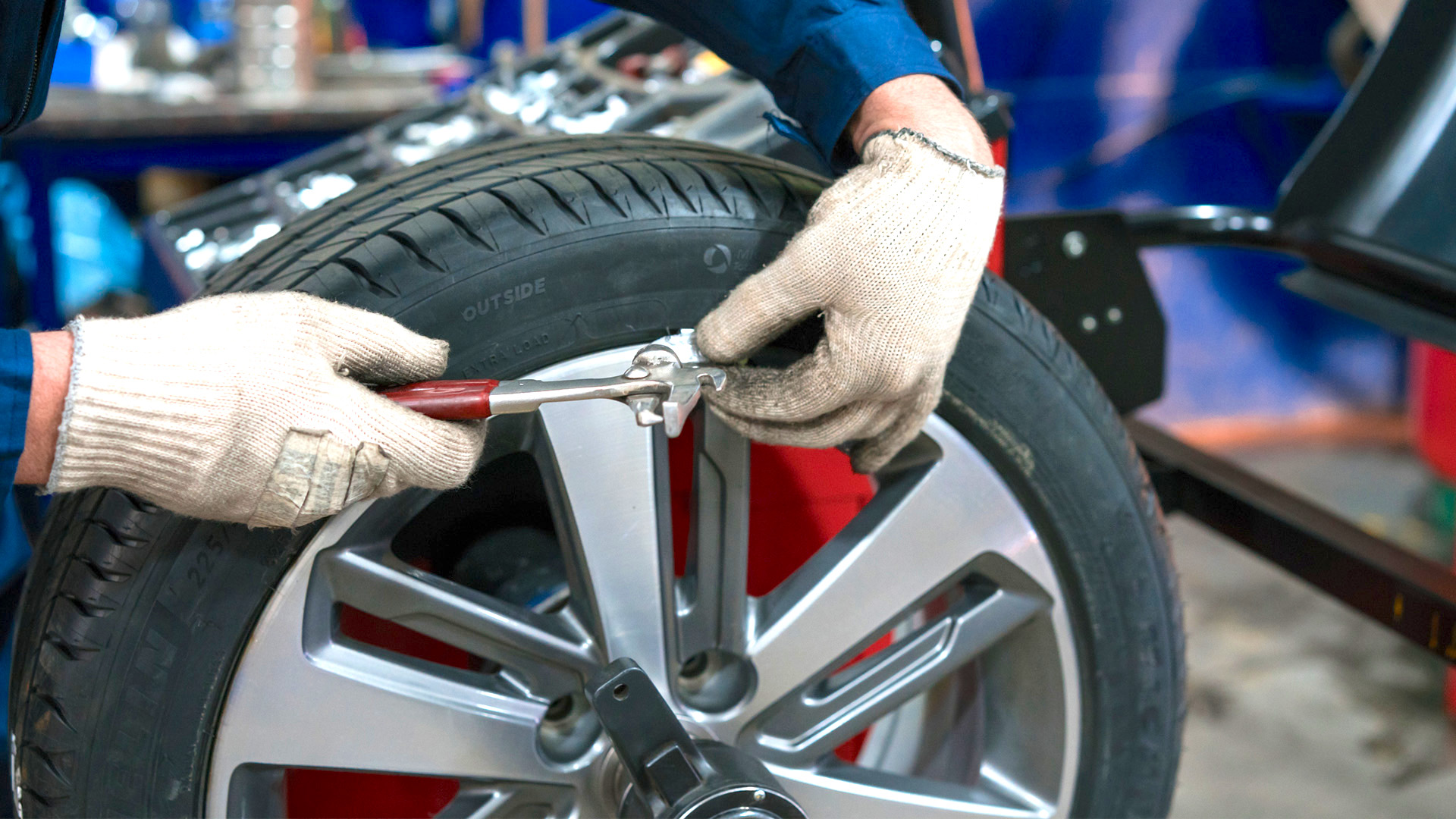

We may earn revenue from the products available on this page and participate in affiliate programs. Learn more ›
There’s an awful lot going on with wheels. In addition to the two most crucial components—the rim and tire—a car or truck’s wheel will also have a valve stem and cap, TPMS sensor (if there from the factory), wheel lug nuts or bolts holding it to the car’s hub, and any center caps or hubcaps. But there’s one more component though, which besides the hardware’s job of safely joining the wheel to the hub is of crucial importance: the wheel weight.
These little tabs of metal are used in wheel balancing, which is important for fuel economy, ride comfort, automotive component longevity, and more. They aren’t the desirable kind of wheel hardware, though. Not like when kids used to steel cars’ chromies (as in, shiny metallic valve stems) back in the ’90s. That’s right, remember when that was a thing?
Let’s discuss what the different types of wheel weights are and what their exact purpose is in the integral, rotational job of the average everyday automotive wheel.
Wheel Weights Serve No Blingy Purpose
As outdated as my reference to stealing chromies is, let’s double down and use the word “blingy,”—the everyday wheel weight is anything but. Usually, people prefer they be as hidden away as possible, such as mounted on the wheelwell-facing rim. Although, that’s largely become a thing of the past with adhesive wheel weights becoming more and more commonplace in your everyday tire shop. Still, if it’s possible to hide adhesives behind the wheel’s spokes, all the better.
In fact, this brings up an important distinction: there are adhesive and clip-on (also called knock-on) wheel weights.
Adhesives stick on the inside of the wheel’s barrel, whereas clip-ons clip to the inner or outer lip of the rim. The former is becoming more and more common, but you still see the latter from time to time, especially on less expensive economy-spec cars from the factory. My old 2014 Mazda 2 came with clip-on weights on its base steel wheels from the factory.

How Are Wheel Weights Installed?
During the balancing process, the technician determines—usually via a dynamic balancer’s suggestion—where weight must be added and in what amount to achieve good balance.
Clip-on units are surprisingly complicated. They come in a wide variety of sizes (and therefore weights) as well as profiles to properly, firmly mount to different cars’ wheels. Companies make clip-on weights that are specifically designed for certain manufacturer’s wheels, but technicians often quickly eyeball what the profile of the rim’s lip is and toss the right type on.
Clip-on installation is simple: put it in place and give it a tap or two with a hammer to crush the center section to secure it in place.
Adhesives are best installed with a little prep. It’s a good idea to clean the surface first so it’s free of oil, brake dust, or anything else that would mess with the glue’s integrity. If a car is going to see scenarios of increased heat, such as at a trackday or autocross event, it’s a good idea to add a strip of sturdy, metallic tape over them to ensure they don’t fly off.

The Positives and Negatives of Wheel Weights
The wheel weight itself serves an important purpose, but the different types have their own ups and downs.
Using clip-on wheel weights entails keeping a wide variety of weights and profiles around. Even though they’re simple, cheap components usually made of zinc or steel, that’s still an expense that adds up in cost and space. Companies usually sell them as kits that include a wide variety of types and weights, as well as small, simple measuring devices to ensure the correct type is tapped on.
On the flipside, adhesives are smaller and truly universal, as there’s no such thing as an adhesive weight that won’t mount up to a car because it’s a BMW, Toyota, and so on.
Though, wheels with a particularly glossy finish or ones that have been ceramic coated can be tough to achieve a good bond with. Thus, some light scuffing might be required, but that could get frowned on real quick if it’s an expensive set of aftermarket or high-end manufacturers’ OEM wheels.
Would you scuff the barrels of a set of centerlock McLaren 620R wheels if you were tasked with balancing them?
Regardless of type, wheel weights are simple-yet-very-important components in ensuring a comfortably riding, safe, and efficiently rolling wheel and tire combo.
More From The Drive
- Hank O’Hop outlines the best cordless impact wrenches
- Here’s how to buff your car
- What in the world is DEF?
- Here’s how you charge a car battery